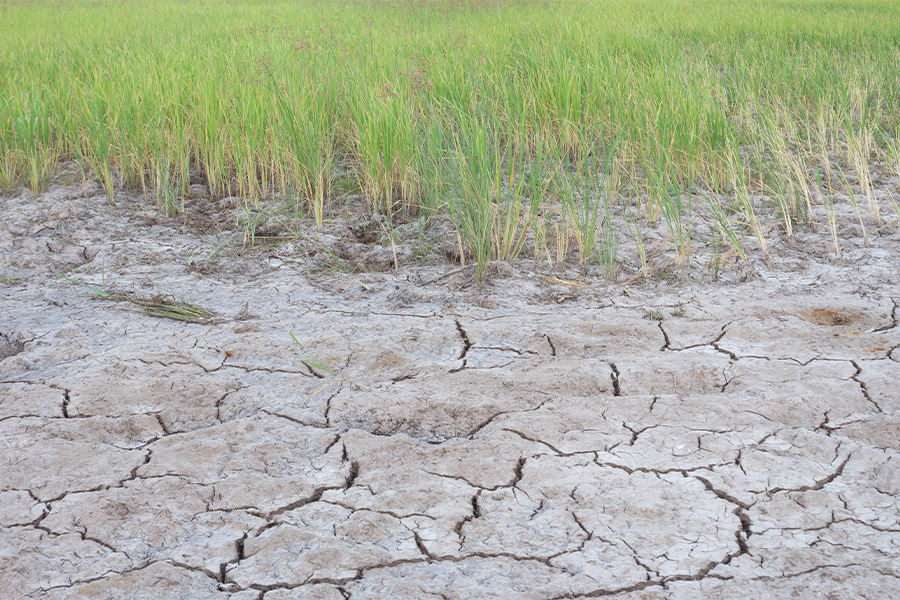Agricultural and Applied Economics
-

AP 130-1-01
2023 Overall Georgia and U.S. Economic Outlook
Each year, UGA’s agricultural economists develop a comprehensive overview to help various sectors of the agriculture industry navigate the year ahead. As Georgia’s land-grant university, the University of Georgia conducts cutting-edge research on critical and emerging issues that are important to the agriculture industry. From this research, UGA provides the best information and education available to producers and constituents to equip them with knowledge and decision-making tools for their businesses. The overall U.S. outlook projections include: 1. In 2023, the postpandemic expansion will end, and a mild recession will begin. 2. The 2023 recession will be mild and short. 3. Tight monetary policy because of high inflation is the main reason to expect a recession. Energy price shocks are a second reason to expect a recession. 4. Georgia’s economy will do better than the U.S. economy as a whole. 5. Economic development projects will provide a solid push to Georgia’s economy.
Amanda R Smith
|
-

AP 130-1-02
Peanut Situation and 2023 Outlook
1. Planted acres are expected to increase in 2023 in the United States and Georgia, a reversal of the 2-year decline in planted acres.
2. Georgia forward contract prices are expected to be down with an estimated season average price of $475 per ton (ranging $450–$500 per ton).
3. Peanut disappearance of the 2022–2023 crop is projected to remain strong at 3 million tons; this is supported by forecasted increases in food use and exports over last year.
Amanda R Smith
|
-

AP 129-1
2023 Ag Snapshots
Ag Snapshots is a brief focus on Georgia’s agricultural industry and are based on the Georgia Farm Gate Value Report from the previous year with helpful infographics and maps. Years prior to 2023 can be accessed on the Agribusiness and Economic Development publications site: https://caed.uga.edu/publications/georgia-agricultural-statistics.html
Sharon P Kane
|
-

In 2018, the Trump Administration proclaimed significant changes in tariff actions on a variety of U.S. imports, which led to retaliation by U.S. trading partners—including China and many U.S. allies. These actions led to a 2-year trade dispute between the United States and China. Global commercial ties were destabilized and the trade and investment transactions and flows were hampered by the resulting trade dispute. This paper documents the timeline of the U.S.–China trade dispute and the retaliation and responses from China to the Trump Administration’s tariffs. As cotton and its related products were caught in the middle of the trade dispute, this paper also provides discussions about the tariffs implemented by both countries on the cotton and textile sector.
Cesar L. Escalante and Yangxuan Liu
|
-

This Excel workbook will allow you to fit data from nutritional experiments to several models. It includes a PowerPoint presentation that shows you how to use the Excel workbook to fit several regression models to experimental data. The models may be used to estimate nutritional requirements or the most economical feeding levels of critical nutrients. All you need is Microsoft Excel (with macros enabled), the downloadable Excel file, and some input/output data.
Gene M. Pesti and Esendugue Greg Fonsah
|
-

Determining an equitable price for purchased forages is a necessary but often uncomfortable topic of discussion for feed growers and purchasers. Usually this discussion is in the context of corn silage; however, the same principles can be used in any discussion involving hay, baleage or grains. In order for an input market to be efficient, the price agreed upon by both buyers and sellers should adequately compensate the producer while still allowing the purchaser the opportunity to economically use the input.
Jeremy Kichler and R. Curt Lacy
|
-

The University of Georgia Agricultural and Environmental Services Laboratories offer soil salinity testing to help farmers and the general public diagnose and manage problems associated with soil salinity. By definition, a saline soil contains excess soluble salts that reduce the growth of most crops or ornamental plants. This publication discusses soil salinity testing, data interpretation and recommendations, specifically those pertaining to the University of Georgia.
David E. Kissel Ph.D, Uttam K. Saha, and Leticia S Sonon
|
-

The state of Georgia ranked ninth out of all states in 2013 for green industry (not including sod production, as this was not included in the analysis) economic contributions (including multiplier effects) to employment (64,066 jobs) and GDP ($3.79 billion) and tenth in total industry output ($6.72 billion). The largest individual sector in regard to output and employment both directly and indirectly was landscape services, representing nearly 57% of industry employment and 39% of economic output. The Georgia green industry represented 0.83% of Georgia gross domestic product (GDP), higher than that of the U.S. green industry as a whole at 0.72% U.S. GDP.
Sharon P Kane and Ben Campbell
|
-

The environmental horticulture industry, unlike many industries, is intricately connected to the national, regional, and local economy as plant and turfgrass sales ebb and flow with economic conditions. This publication updates readers on the national, regional, and local economic factors that have affected the environmental horticulture industry. Since the recession and drought of the mid-2000s, we find that the environmental horticulture industry has suffered economically and has yet to recover to pre-recession levels.
Kent Wolfe, Sharon P Kane, Brady Brewer, and Ben Campbell
|